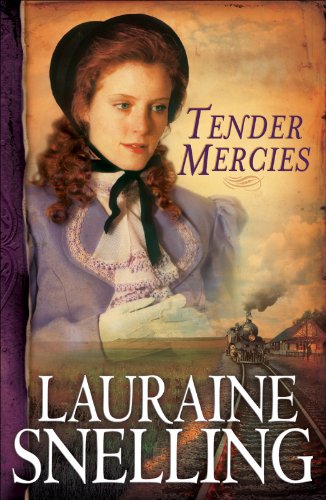
Tender Mercies by Lauraine Snelling is the fifth novel of the “Red River of the North” series. As with the others, I thoroughly enjoyed this account of the founders of Blessing, Dakota Territory.
The series describes the lives of Norwegian immigrants who first homesteaded Dakota Territory in 1880. Their courage, sacrifices and dedication paved the way for those to follow. In Tender Mercies the town of Blessing has been founded. The town now has a general store that also serves as post office, a bank, blacksmith, grain shed, church and school.
Some homes are built of wood, but many are built of sod—brick-like slabs of soil with grass roots still attached. In 1887, when Tender Mercies takes place, both the school and the pastor’s house are soddies.
Pastor John Solberg was heartbroken when Katy Bjorklund married Zeb MacCallister, a man with an irritating Missouri drawl, so different from the soft Norwegian/English language common in Blessing. Pastor Solberg is also the teacher of the one-room school. When Zeb’s sister Mary Martha comes to visit, she decides to stay and offers to help at the school. At first he hesitates to accept her offer—her southern accent is an unwelcome reminder of his lost love. But as the school year progresses, he’s not only impressed with her help with the children, he finds himself strongly attracted to her. When a family emergency calls her back to Missouri, both John and Mary Martha realize how precious they have become to one another.
Lauraine Snelling’s fascinating account of Dakota Territory’s arduous beginning and gradual growth is the crux of the “Red River of the North” series. By this fifth novel, the different family names are not only familiar to me, they’re like old friends. Each book concentrates on one family, but includes the others in their struggles and triumphs.
One of the reasons I love this series is to learn how our early immigrants managed from such meager beginnings. When they slaughter a pig, for instance, every part of the animal is used–the meat to eat and preserve for later use, the skull boiled for head cheese, the feet pickled, the fat rendered to lard, the intestines used to make sausage, the hide used for leather reins and shoes. Cold storage was a root cellar, an underground structure that kept food cool in the summer and from freezing in the winter.
Another delight for me was learning about the new invention of Singer Sewing machine, a machine run by a foot treadle. Up to that time, all clothes were made by hand. With the new machine seams were stronger and garments could be made in a fraction of the time. I am a long-time Singer user and it was fun to read of its early history.
If you’re looking for a good story of our nation’s early years, I strongly recommend Tender Mercies of the “Red River of the North” series. Better yet, start with the first one, An Untamed Land.


A lot of research behind such a novel. Great review!
Yes, this author has definitely done her research. This is an excellent series, Irene. Thanks for your comment.